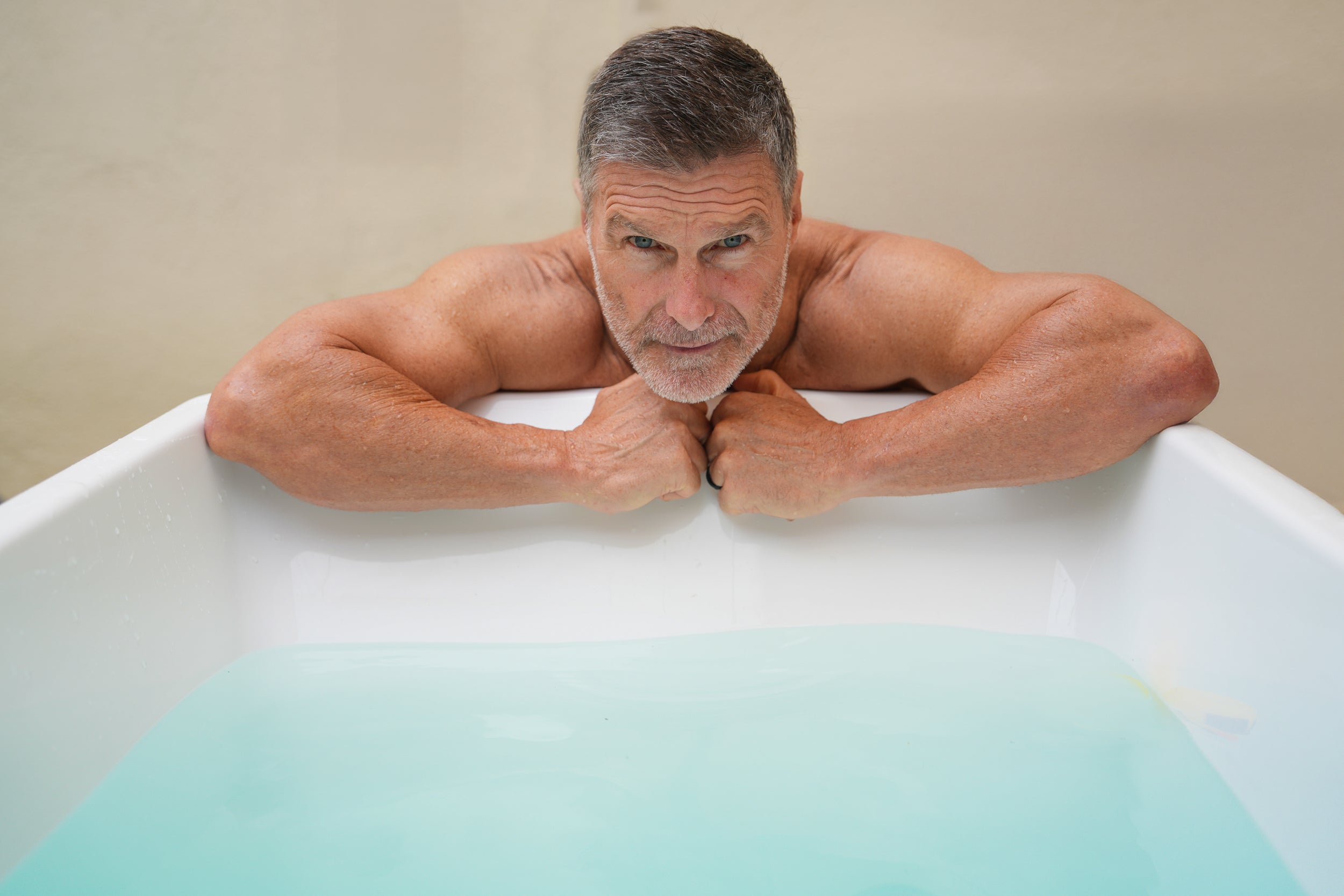
Exercise and Mental Health: Understanding the Beneficial Connection
Exercise and mental health are connected. One 2020 study states that of 152,978 participants, those with lower fitness levels were 98% more likely to experience depression and 60% more likely to experience anxiety. Another study states that exercise is 150% more effective than counseling and medications.
This connection is crucial, and we must be mindful of the potential benefits in order to take full advantage. In this article, we uncover the ways physical activity can affect mental health, from direct improvements to specific illnesses to indirect alleviation of mental illness symptoms. We also give you the tips, tricks, and products you need to start.
How Does Exercise Improve Mental Health?
According to the Centers for Disease Control (CDC), mental health is your emotional, psychological, and social well-being. The World Health Organization (WHO) adds that mental health helps us to learn, feel good about ourselves, and cope with stress. Some common mental health issues include anxiety, depression, schizophrenia, anorexia nervosa, and obsessive-compulsive disorder (OCD).
Physical activity and mental health are undoubtedly related. Beyond exercise being one of the best ways to improve your mood, it also releases endorphins, dopamine, and serotonin, which are “feel-good chemicals.” This happens as your breathing and pulse quicken. Endocannabinoids release following a workout, which can make you feel relaxed.
Exercise further improves mental health by increasing blood circulation in the brain and affecting its hypothalamic-pituitary-adrenal (HPA) axis. This part of the brain communicates with the:
- Hippocampus, which has a role in memory, motivation, and mood
- Amygdala, which triggers fear when experiencing stress
- Limbic system, which also dictates mood and motivation
Essentially, when we work out, our brains get more of what they need to be healthy. In turn, this promotes mental health.
Mental Health Benefits of Regular Exercise
The mental benefits of exercise include relieved stress, better sleep, boosted self-esteem, and lessened symptoms overall. And, if you exercise regularly, these advantages can become long-term benefits. This is why exercise tops the list of best self-care ideas.
There is so much that exercise does for mental health. Knowing the details and scope of each can help you understand the full effect exercise might have on your well-being.
1. Exercise Relieves Stress
Exercise relieves stress by pumping endorphins through the body. Endorphins block pain signals before they can reach nerve cells. They may also control the pituitary gland to some degree, meaning that they play a role in regulating hormones beyond cortisol, the stress hormone.
With lowered cortisol and relaxed muscles, you can experience less tension after regularly exercising. This can result in fewer stress-induced headaches. Exercise can also give you a sense that you are more in control, potentially soothing a perception of spiraling. Finally, exercise can act as a natural outlet for frustration and anger, releasing stored energy in a healthy way.
2. Exercise Improves Sleep
Exercise improves sleep by increasing the amount of melatonin your body creates in the pineal gland. Melatonin is another important hormone that establishes your circadian rhythm. Exercise also promotes healthy oxygen distribution, which also helps you sleep better.
But how does sleep affect mental health? Many people with mental illnesses struggle to maintain a consistent schedule due to insomnia, racing thoughts, and more. They lose sleep, which makes them feel worse the next day. Plus, without hitting rapid eye movement (REM) sleep, sufferers can miss out on essential emotional processing that can lead to the development of other complications. The key is to establish a regular schedule.
3. Exercise Boosts Self-Esteem and Confidence
Exercise boosts self-esteem by potentially lowering the body mass index (BMI), but this isn’t exclusive. Exercise can also improve your perception of your physical fitness and body image. So, your physical composition doesn’t necessarily have to change much in order to feel the positive effects. Again, this happens through the release of endorphins from physical movement.
Furthermore, exercise can boost self-belief (also called self-efficacy) and confidence. These traits help you feel that you can handle whatever life throws at you, lowering fight or flight responses, depression, and worry.
4. Exercise Can Connect You Socially
There’s a direct correlation between social relationships and mental health. Friends and loved ones provide emotional support, stability during stress, and an outlet for ideas and feelings. But, it can be difficult to build a social circle if you are struggling with mental health or have a diagnosed illness like antisocial personality disorder.
But, there are many social benefits of exercise. A survey found that of those who exercise regularly, 46% go to fitness classes. Fitness classes are a great way to be around new people with a common purpose. So, there is a large community for those who find it hard to approach others and want to make connections.
5. Exercise Lessens Anxiety
Exercise lessens anxiety, very similarly to how it lowers stress. Endorphins and blood flow soothe nervousness and tension. There is also evidence that physical movement can keep certain neurons from activating due to stress. It is possible that exercise lowers anxiety locally within the ventral hippocampus, which makes up both sides of the temporal lobe.
Exercise provides a chance to practice other techniques that go beyond the physical processes that help anxiety. For instance, mindfulness is a common treatment for mental health. When you move your body, you can practice noticing sensations and feelings. By connecting your body and mind during motion, you’ll learn more about how your body feels in different situations. This can help ground you and even relieve health anxiety.
6. Exercise Reduces Depression Symptoms
Endorphins sent out during exercise can also reduce depression symptoms. There is a chance that depression increases the availability of the neurotransmitters needed for a better mood. Another theory suggests that the body’s rising temperature during physical activity can ease more discomfort in the brain. Some studies even state that exercise works just as well as prescription antidepressants in certain cases.
Other benefits of physical activity for mental health, like heightened self-efficacy and regulated sleep patterns, can also help soothe depression.
7. Exercise Relieves Attention-Deficit Hyperactivity Disorder Symptoms
Attention-Deficit Hyperactivity Disorder (ADHD) happens when an individual has a dopamine reward system that doesn’t work correctly. In other words, when a neurotypical person completes a task, they experience a burst of dopamine, which makes them feel good about their accomplishment. Those with ADHD may not have sufficient amounts of dopamine. Or, their bodies may not use it correctly.
Dopamine helps us focus, think, and plan ahead. It can improve alertness, concentration, and executive function. Therefore, exercise can help those with ADHD by releasing it.
Best Types of Exercises for Your Mental Health
Some specific types of workouts can be far more helpful for your mental health. The Mental Health Foundation says that 30 to 35 minutes three to five days a week is best for improving mood in general. But, you should always consult your doctor and therapist to learn what exercise may be more beneficial.
For example, some may need community-based exercise. Activities to consider include:
- Group classes like Zumba or kickboxing
- Joining a bowling or sand volleyball league
- Joining a running, cycling, or hiking club
- Playing Ultimate Frisbee
Joyful movement is another option for healing mental health. Consider:
- Dancing, as informally as bopping to music while cleaning your house
- Making something beautiful through a do-it-yourself project, like painting a room a new color
- Creating a new outdoor space by planting new flowers or simply mowing the lawn
- Playing with your kids or nieces and nephews
More traditional exercises for mental health include:
- Yoga and stretching
- Weight training
- Short walks at a moderate to brisk pace
- Aerobics
- Mindful walks, where you pay special attention to your surroundings while you move
Those with seasonal affective disorder (SAD) may find that outdoor activity greatly decreases depressive episodes. Overall, Vitamin D does help mental health, and a natural source of it is sunlight. Some outdoor exercises for mental health are:
- A walk around the block
- Biking or mountain biking
- Hiking
- Skiing, either downhill or cross-country
- Rock climbing
Being around water can also help lower stress, anxiety, and depression. Water-based activities to consider are:
- Swimming
- Kayaking or canoeing
- Rafting or sailing
- Walks on the beach
Tips for Incorporating More Physical Activity into Your Routine
If you have yet to incorporate exercise into your mental health regimen, start small. You don’t have to do the most intense exercise to see a change in your mental health. After all, just some physical movement can let out feel-good chemicals. And on top of that, exercise can feed your brain, strengthen muscles, improve sleep, and more.
Another way to push the benefits of exercise is by adding a cold plunge into your routine before or after your workout:
Some other tips to start adding physical movement into your routine include:
- Find ways to add movement into your current lifestyle, either at your home or work
- Consider adding exercise to times during the week you feel most rested
- Pick a gym that is between work and home
- Choose exercises you enjoy that don’t feel like a chore
- Wear comfortable clothing
- Keep movement plans and goals dynamic, regularly adjust them to changes
- Don’t push too hard - aim for a slightly warmer body that is breathing just a bit more heavily
- Have contingency plans for feelings of pain, lower self-esteem, exhaustion, and overwhelm - progress may not be linear, and that’s okay
Moreso, ice baths for mental health can improve your mood by boosting norepinephrine, increasing energy, reducing stress and anxiety, and improving mental fortitude. In addition, a cold plunge can help regulate hormones and calm your vagus nerve. This long nerve controls and moderates your nervous system, but soothing it can relieve Post-Traumatic Stress Disorder (PTSD) symptoms.
Pairing your cold plunge with a sauna provides even more advantages. You can even do some workouts within your sauna, like stretching, yoga, or stationary bike. During your post-workout recovery, saunas release endorphins, tension, and toxins. Lastly, a recent study states that whole-body heat treatment (like a sauna) can help depression.
Plunge Into the Benefits of Exercise and Mental Health!
Exercise and mental health are forever linked. Real people have experienced lessened symptoms of depression, anxiety, ADHD, PTSD, and more. Exercise directly improves sleep quality, self-esteem, and stress levels.
Saunas and cold plunges can aid mental and physical health. During post-workout recovery, ice baths can reduce muscle damage while saunas lower muscle soreness. This is just the tip of the iceberg when it comes to the benefits you’ll experience after you add both to your routine.
We offer financing and discounts so that you have wider access to the products you need to build overall health and wellness. Learn more about our cold plunge and sauna options, including our cost-effective pop-up Ice Barrel today.
























